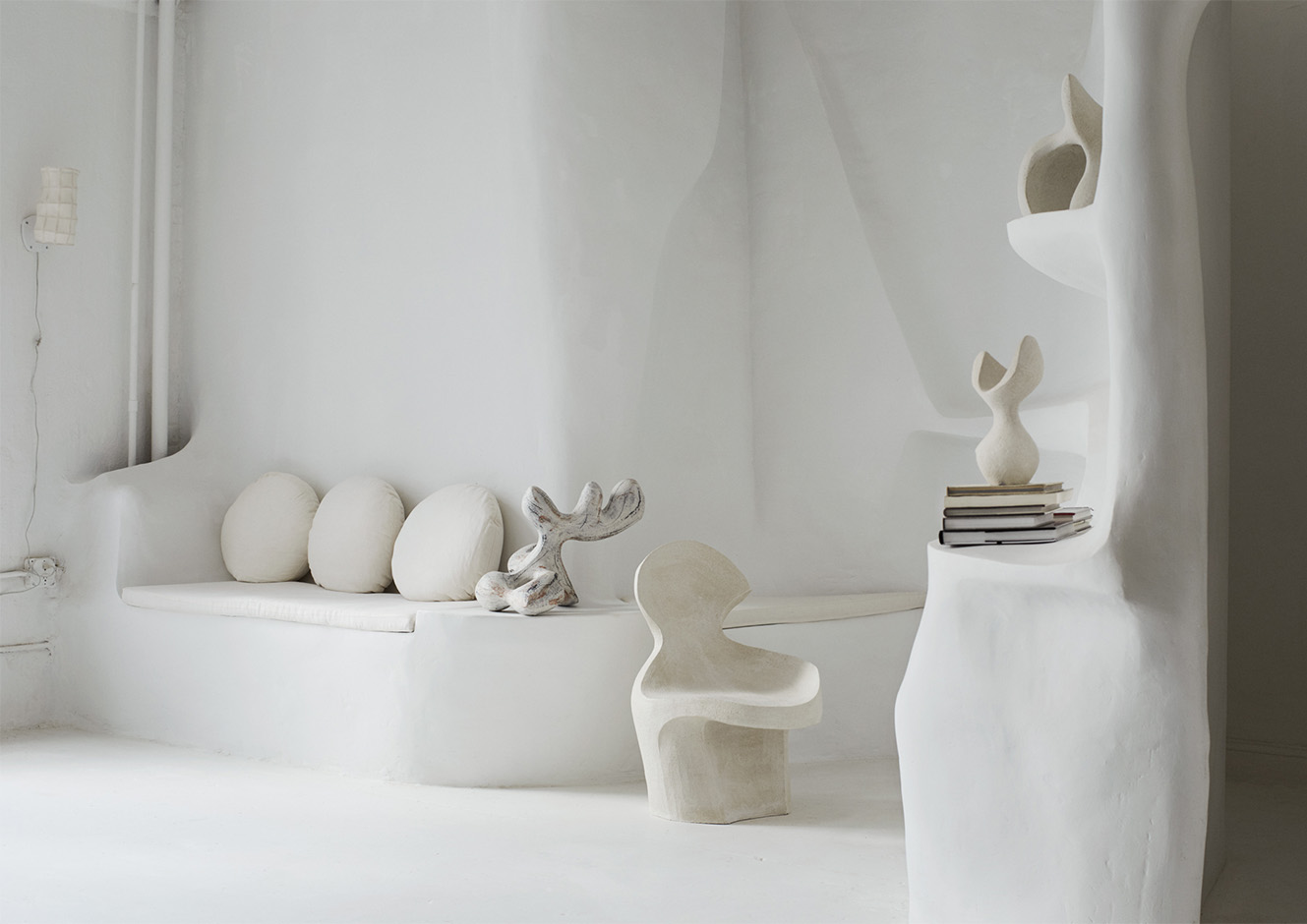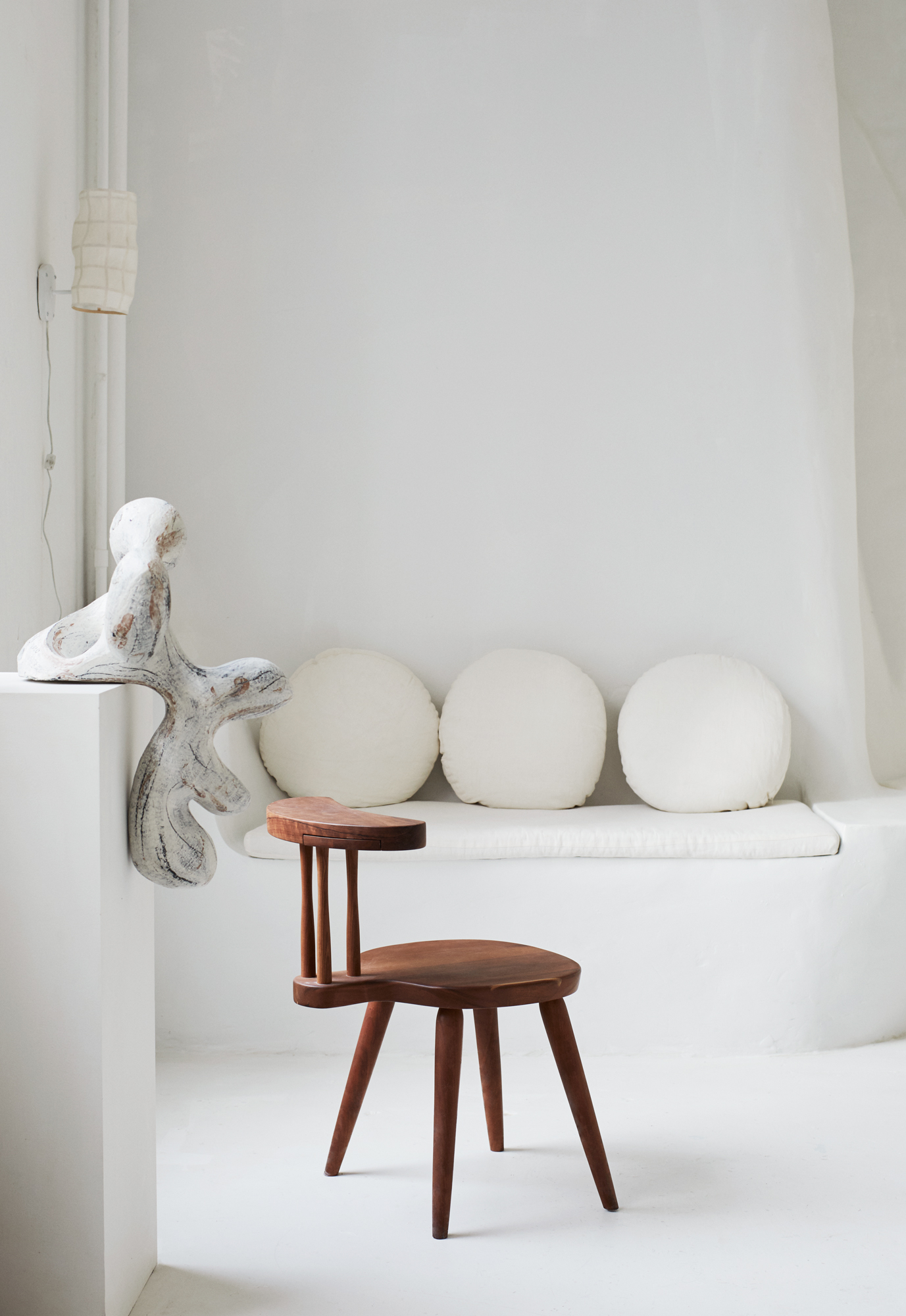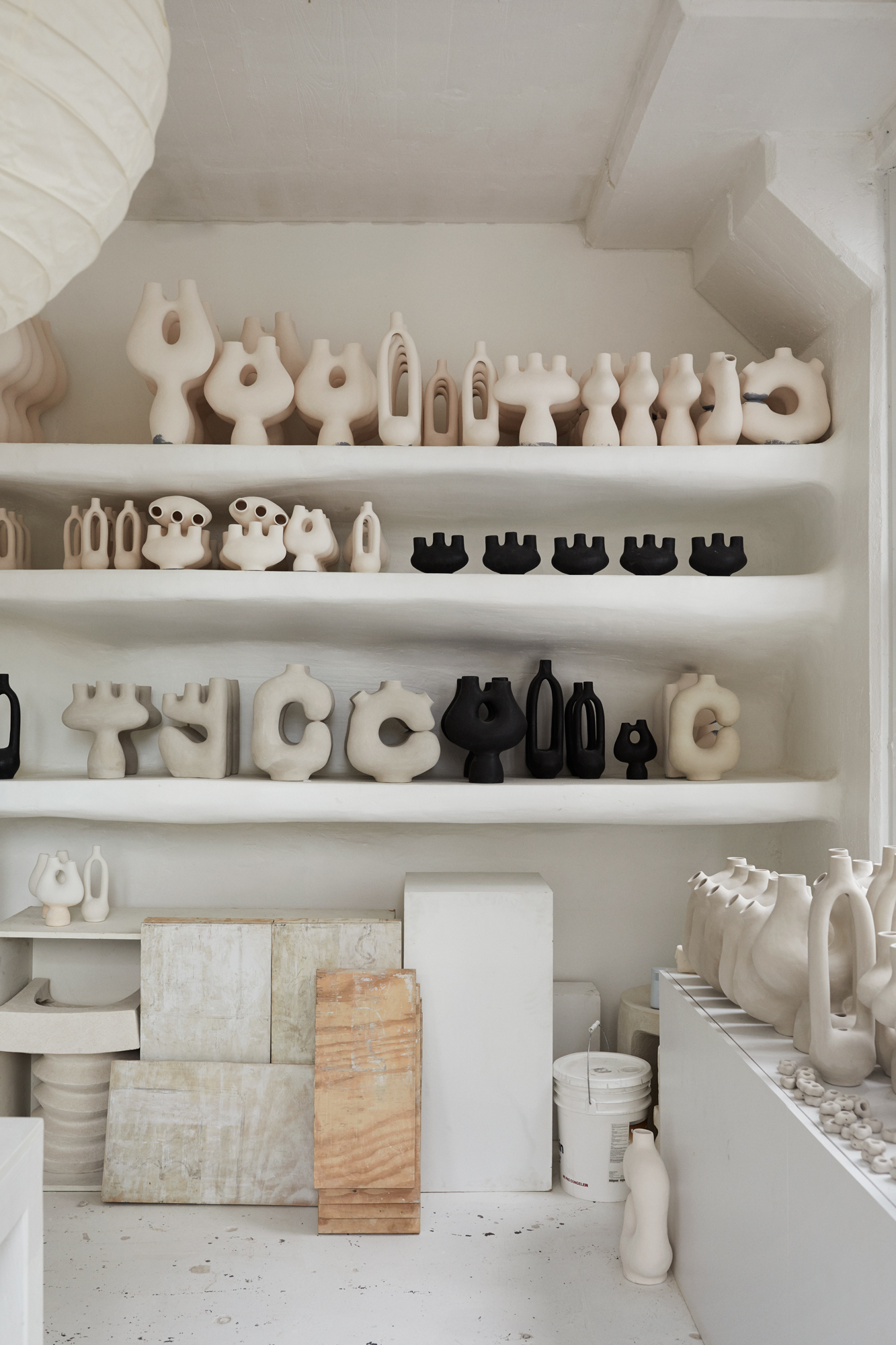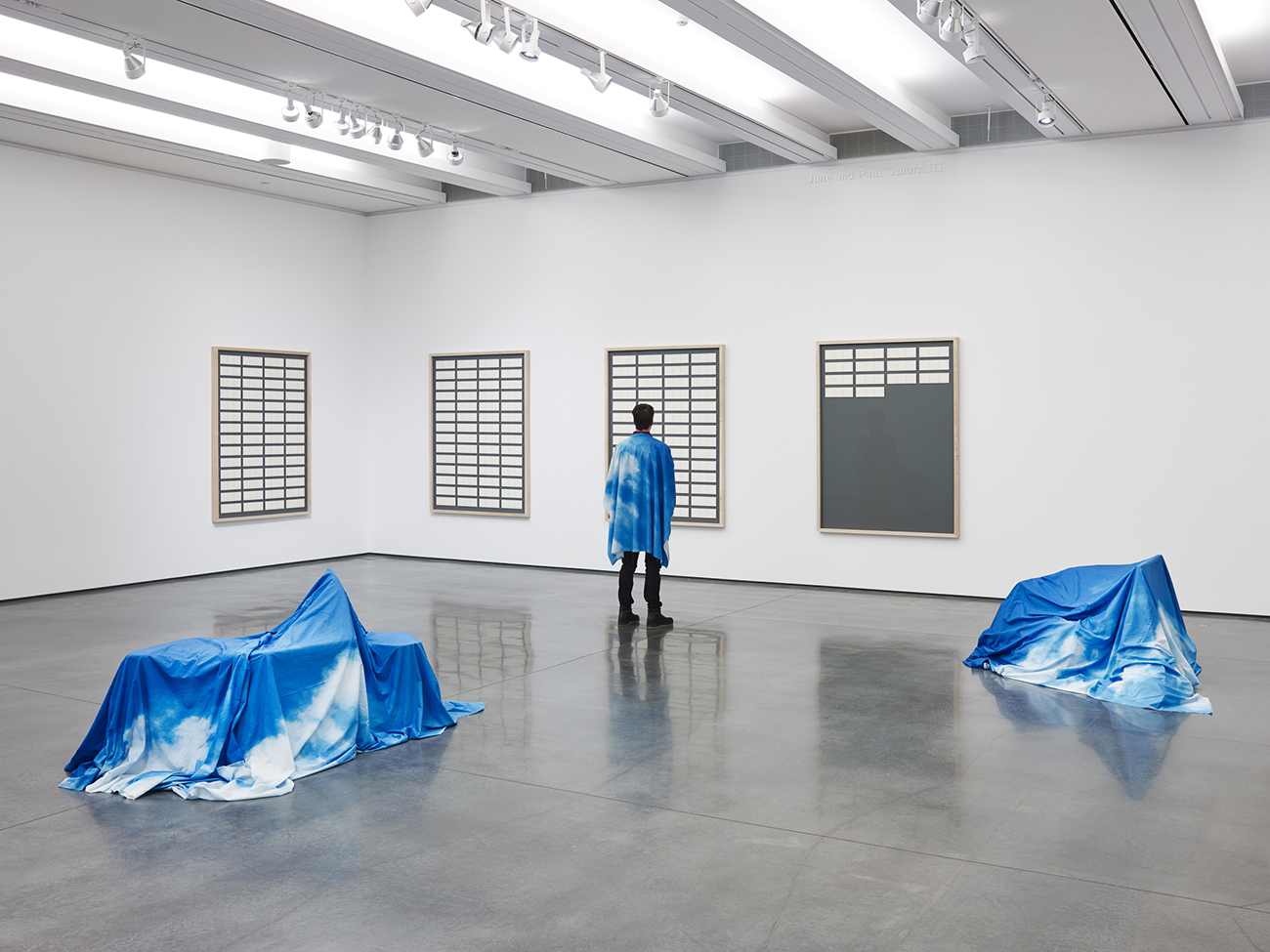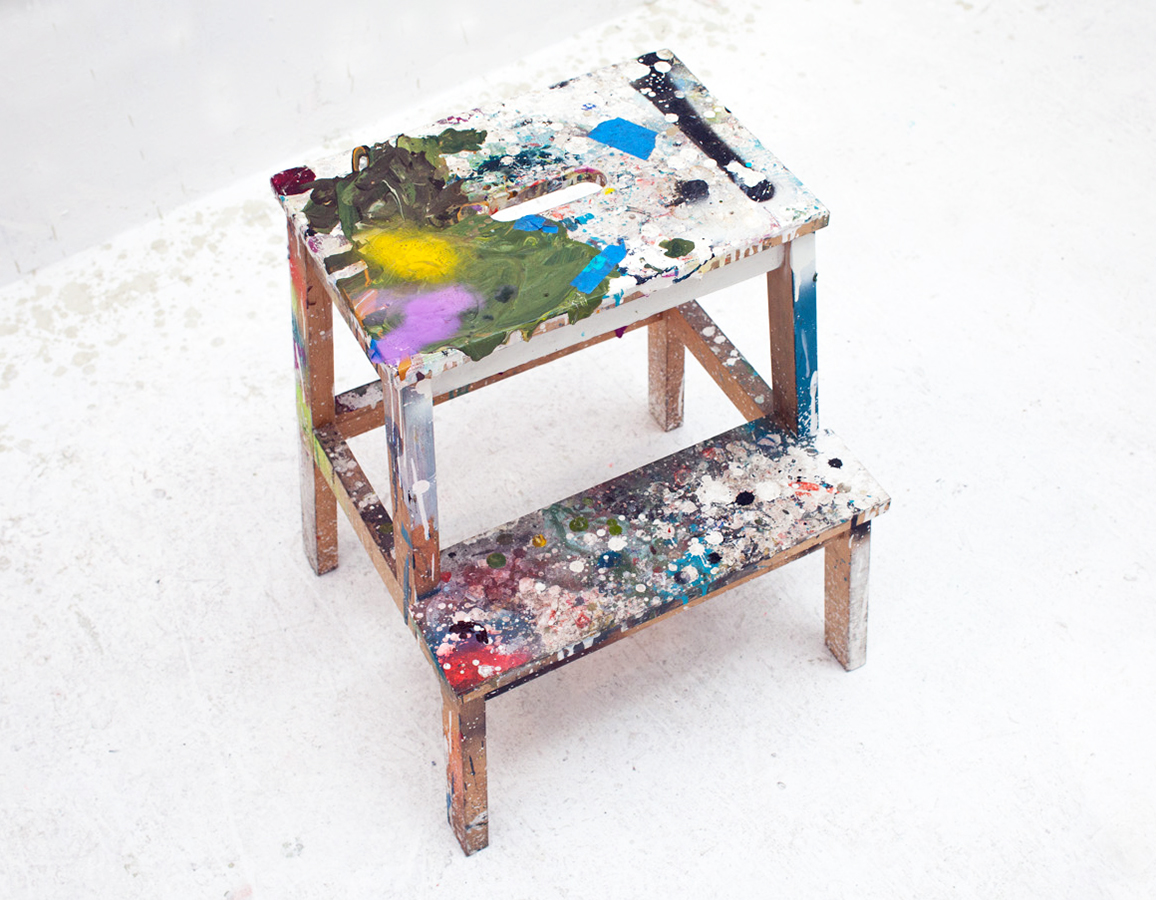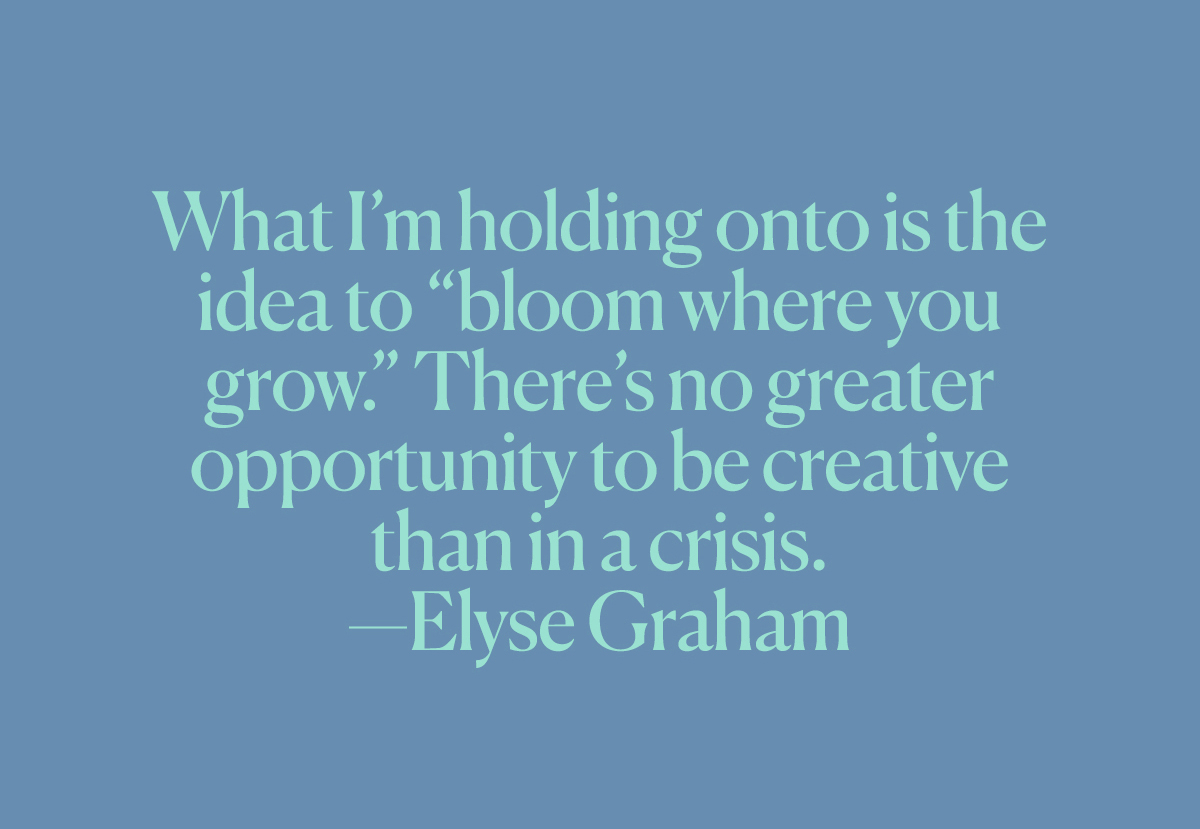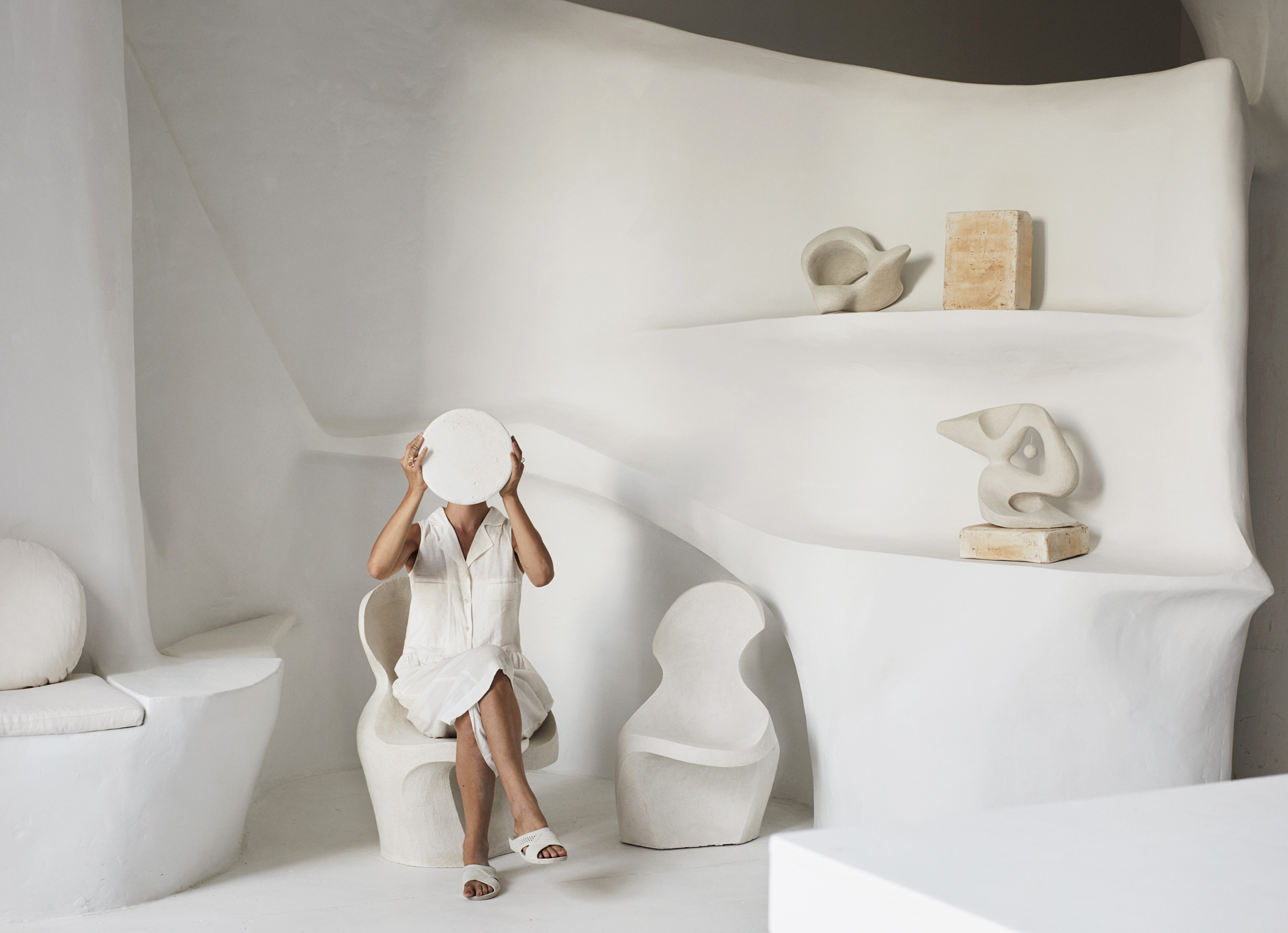
10.20.20
Studio Visit
Simone Bodmer-Turner’s New Brooklyn Studio is Like a Ceramic Sculpture Come to Life
Ceramicist Simone Bodmer-Turner is slowly but surely building a world in white. If you look her up on Google Images, she is almost always draped in some billowing garment in shades of ivory as if she herself is morphing into one of her voluptuous, Henry Moore-esque vessels. Based in New York, her first foray into ceramics-making came in the form of evening classes as a respite from full-time work at a start-up. But after a few years fighting an undeniable pull towards the material and practice, she eventually ditched the day job, traveled to Japan and Oaxaca to hone her craft, and settled back in Brooklyn, opening her studio in 2018.
She quickly became known for her looping, exaggerated jugs and vases with shapes vaguely reminiscent of traditional Meso-American carafes. But as she progressed, the forms became weirder, more amorphous. Less something you could stick a bundle of wildflowers in and more an investigation into how far she could push the material itself. Multi-chambered blobs that resemble drops of dye diffusing in water, crawling branches that lean precariously off ledges, claw-legged jardinieres, or twisting, cave-like configurations encircling orbs held up by invisible string — all rendered in her ever-present shades of chalky white. Her most recent project, a build-out of her Brooklyn studio, explodes the scale of those forms. Taking over the doorway and an entire wall adjacent to the former factory’s bright loft windows, she installed a bench, desk, and shelving in textured white gypsum — what she describes as an homage to the Mediterranean-influenced organic architects that have shaped her ceramics practice thus far.
We dialed up Bodmer-Turner to chat about her transition from working in finance to full-time ceramicist, her new studio, and her upcoming plans to delve into multi-functional — and much needed — furniture design.
PHOTOS BY PIPPA DRUMMOND
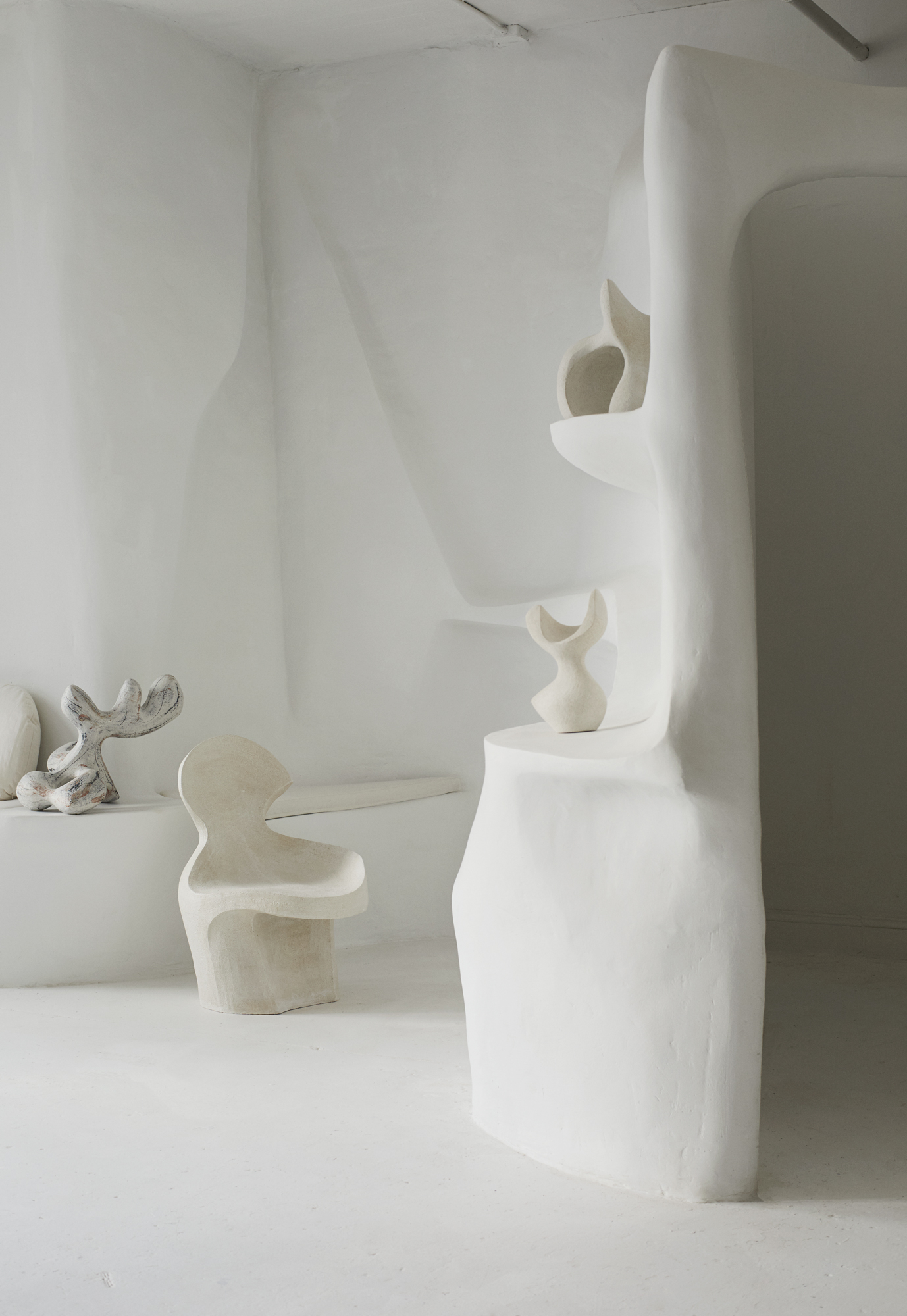
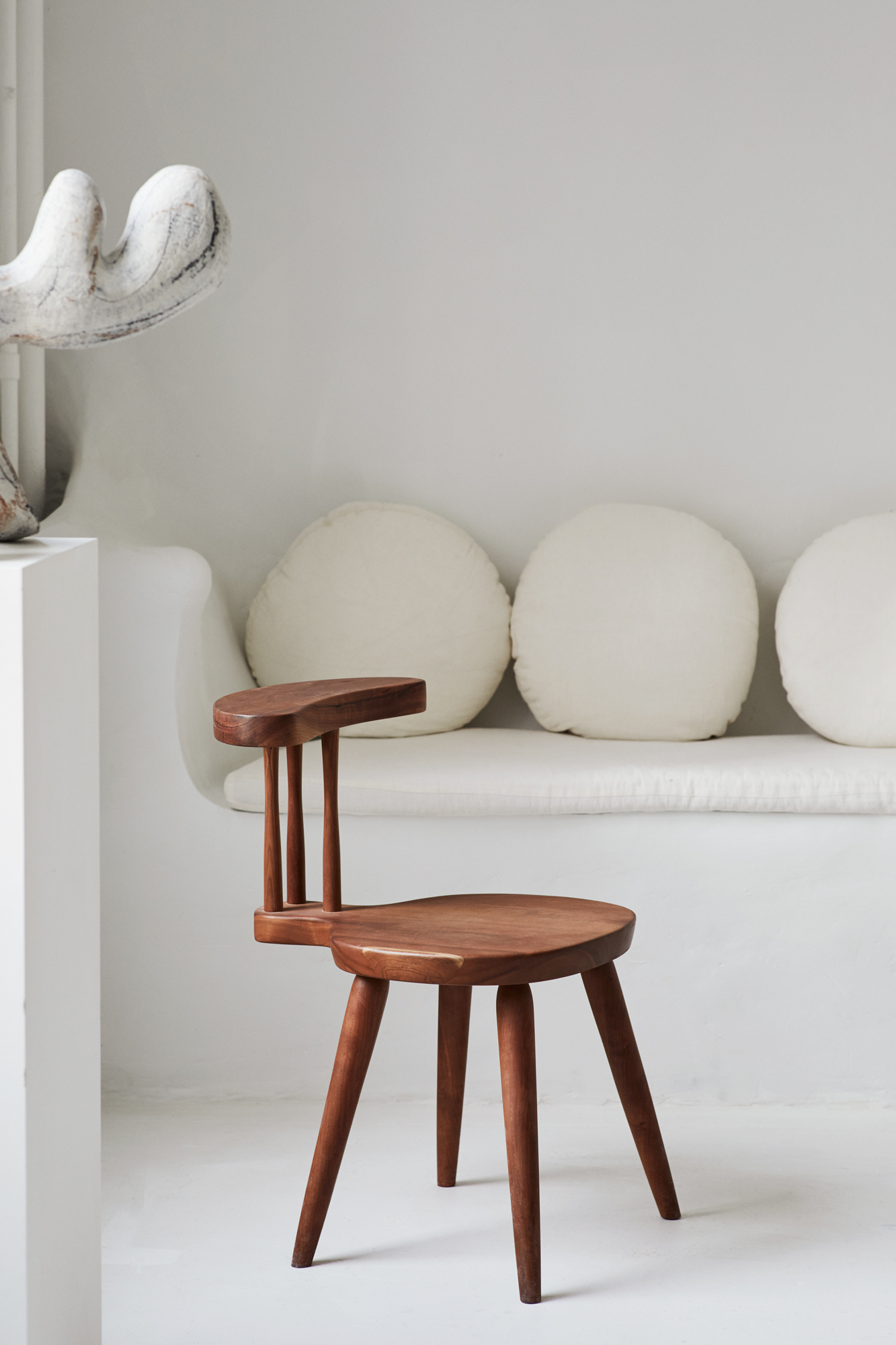
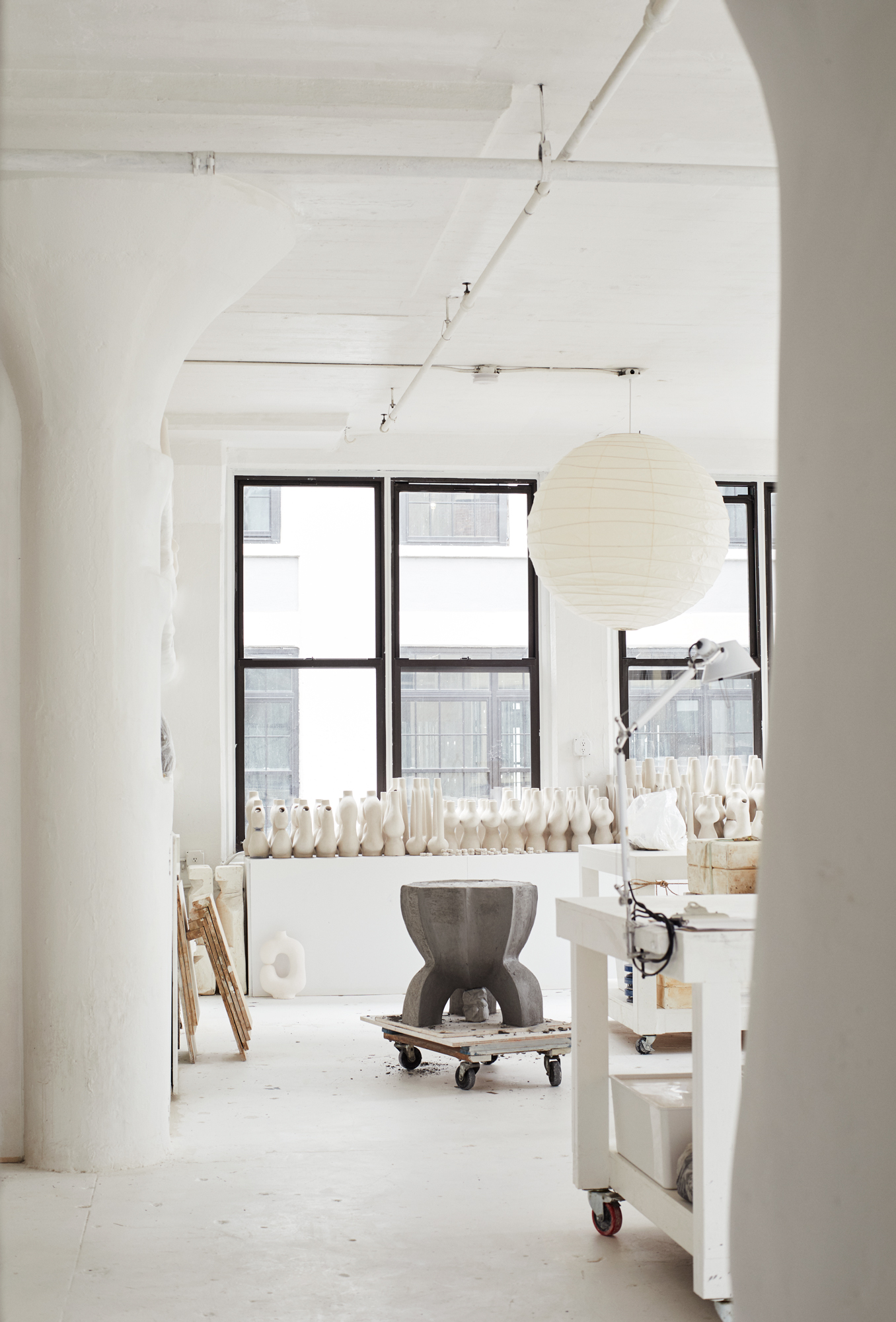
Tell us a bit about your background. From what I understand, you followed a circuitous path to becoming a ceramicist.
My background is not in the arts. I didn’t go to school for this. I went to school for English and worked in finance. The first year I moved to the city, I did not want to be in the city. I wanted to work on trails in the mountains, but I got offered a job that seems like an excuse to move somewhere strange and huge and try it for a minute. Then of course I fell in love with New York. I began taking ceramics classes on the side while working at a start-up just to have a creative expression outside of work and I totally fell for the medium, so I kept working at it. Now it’s been seven years. It slowly evolved from doing little pop-ups to, now, full time.
Tell us about the new studio installation.
We took over the new space in February, but then COVID hit, so it was an excuse to do a focused project with all this time and new space. So it’s been my COVID project.
Did you build it all yourself?
Not entirely myself. I worked with a friend of mine who has a studio downstairs called Cain Cain. Usually, they do a lot of fabrication for events, so they had a lot of Design Week and Fashion Week shows lined up that were obviously canceled. They were especially helpful with the framing of it because that area is a little overwhelming for me — just making sure everything is secure and weight-bearing. Then we worked together to apply the gypsum, finesse the final form, and sand the surface smooth.
Can you give us a little walkthrough?
So it’s 1,200 square feet and when you walk in, the sculpted part is immediately on your right. You walk through almost an enclosed space — this contracted darker space — and then come into the studio, which is a big, brightly lit space with lots of windows. It’s really lovely. The sculpted area takes up maybe one-third of the studio, the rest is dedicated to production, where we also built some shelves to display the pieces.
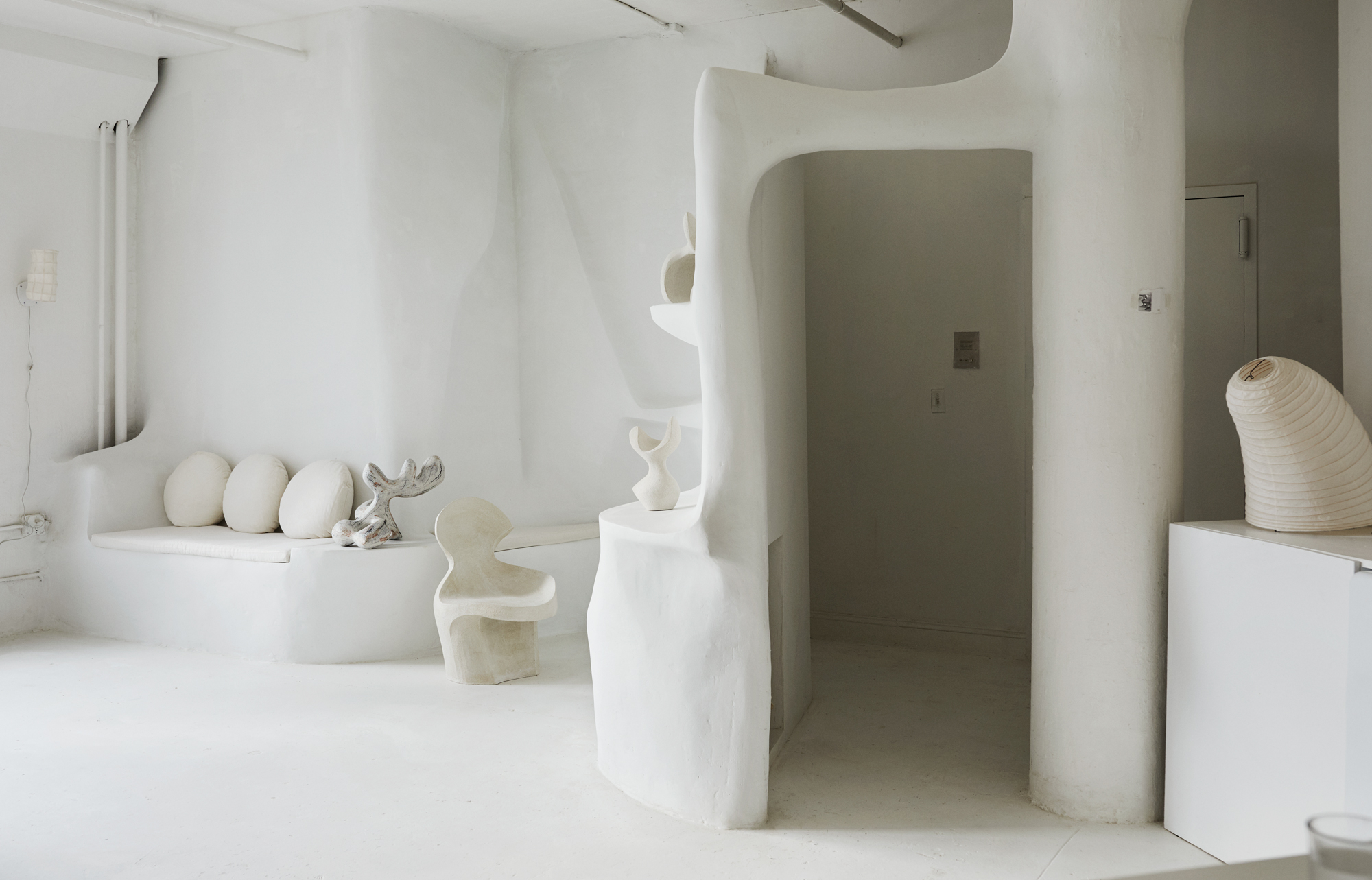
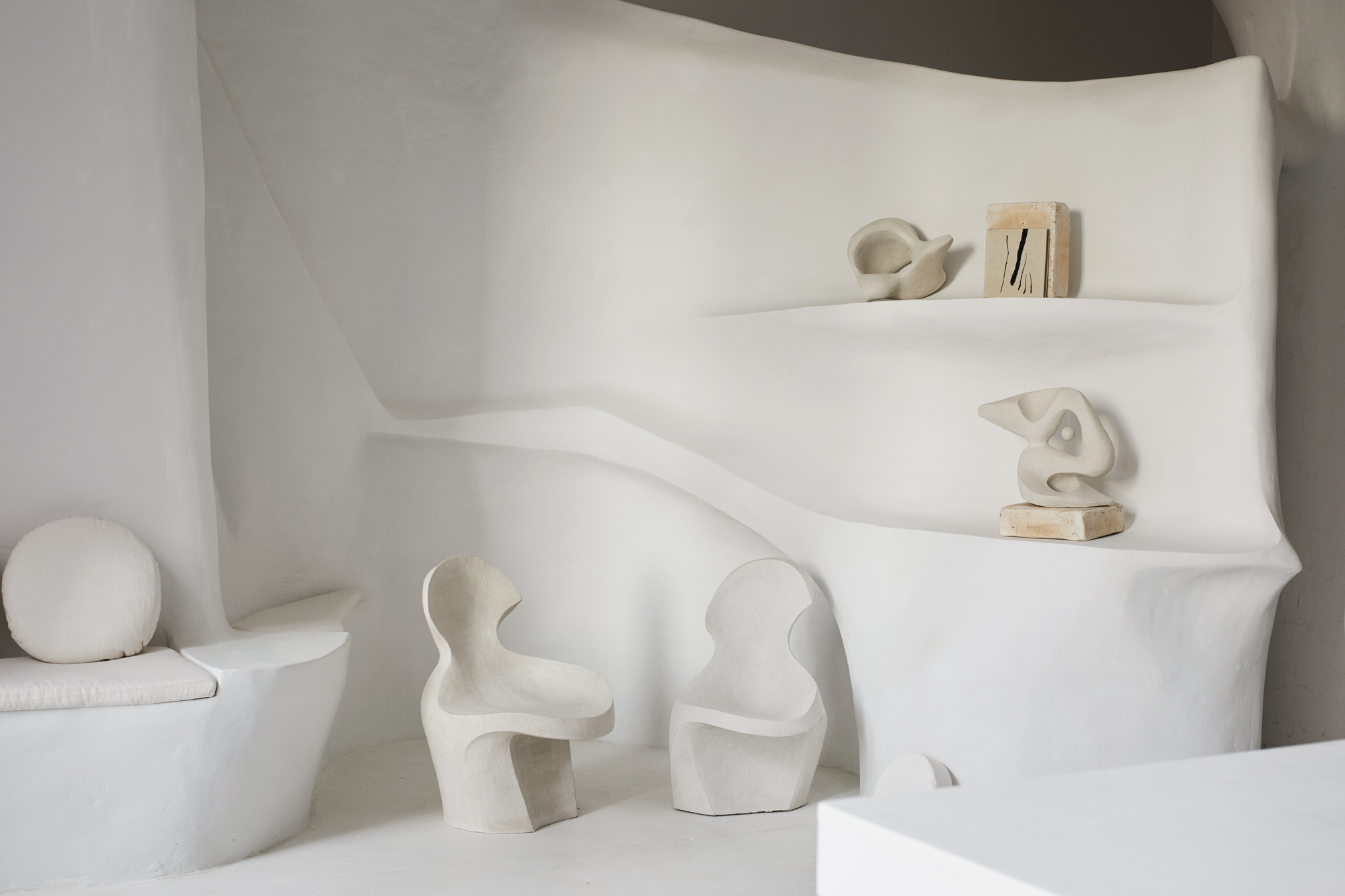
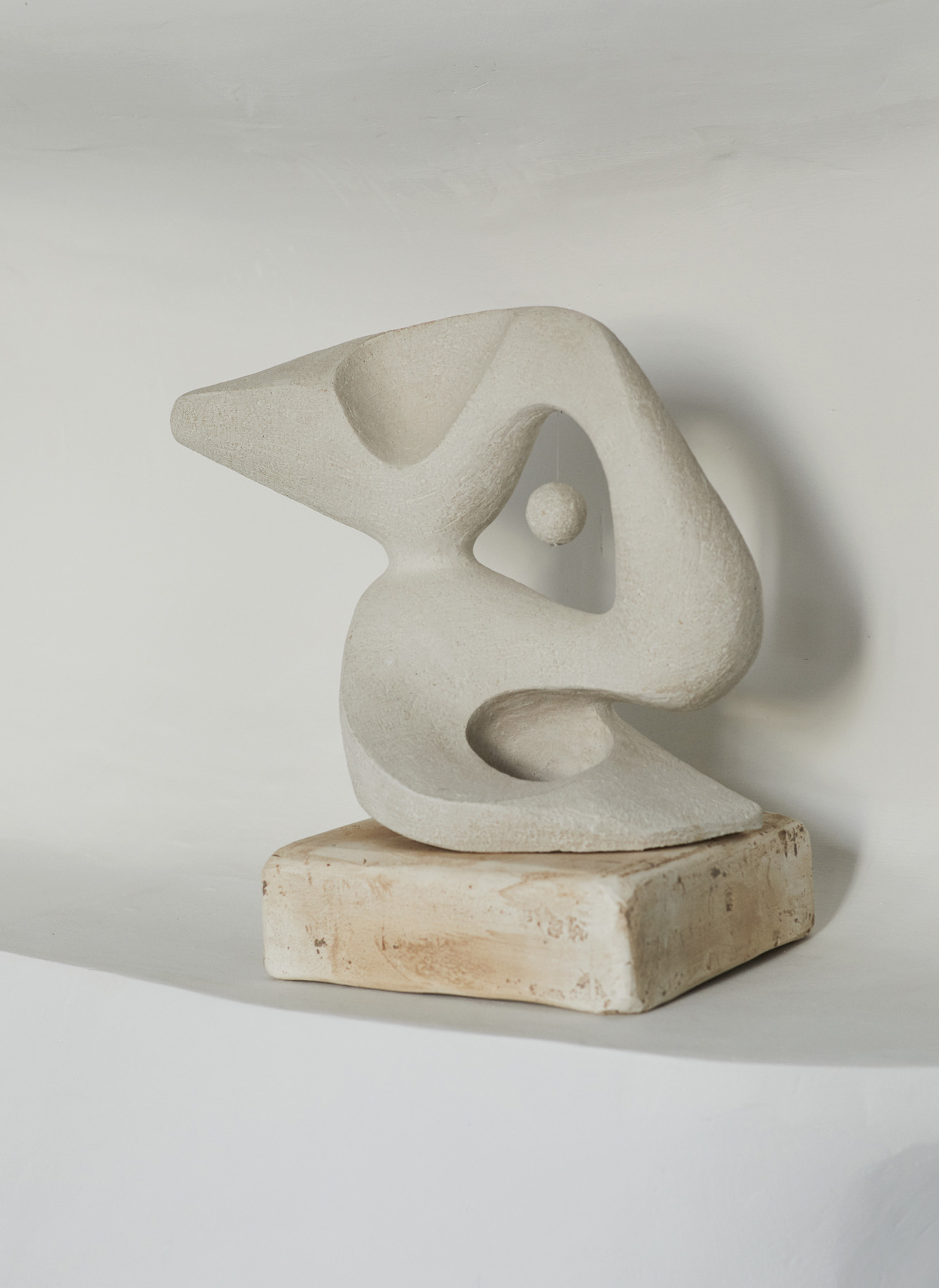
What were some of the references you were thinking about when designing the space?
Organic architecture has long been influential in my smaller-scale work. When I made the transition from working mostly in vessels to working more in closed-form sculpture, Valentine Schlegel, Savin Couelle, and Javier Senosiain were all influential in teaching me how to create those cave-like forms, and the movement and the shadows within those forms. It’s a study that I’ve been practicing for the last two years on much smaller scale sculptures, but I’ve always wanted to try my hand at doing something architectural scale. So when this opportunity arose, I was really happy. I’ve been meaning to see what my expression of this would be for some time.
What is it about those architects and designers that drew you to them?
I definitely drew heavily on Valentine Schlegel, she’s one of my greatest heroes. She’s such an incredible woman. I’m in the process of transcribing the one book that’s dedicated to her from French to English — my copy is very battered. I’ve just been learning what I can about her life because there’s not too much out there, plus she’s still alive. I love her softer work, which feels like it creates an entire kind of cocoon around you. It feels similar to the architecture you find along the Mediterranean. She’s been a large influence on me for a long time, mostly her fireplaces and interior spaces, there’s quite a range. There was one specific fireplace of hers that I loved that I wanted to incorporate, but the rest was dictated by the space. I wanted there to be a handful of flat spaces to present work and a bench that could double as something practical to sit and work on. But also the cushions come off and you can display things on there. We were trying to work with a smaller space and have it be multipurpose.
This style of white-washed organic and biomorphic forms has become a bit of a trend recently. I think most popularly exemplified by Jacquemus’ Oursin restaurant in Paris, where you also have pieces on display. Where do you think that comes from?
I’m very attached to certain places and the fond memories they recall. I grew up in a stucco house, so that kind of architecture has always appealed to me. Then there are Mediterranean areas, which are the places that I always want to be, where I feel most aligned with the creative energy and the natural surroundings. The way that the white cliffs just tumble into the ocean, it’s just the most gorgeous landscape. I think, for me, and many people, it’s reminiscent of a place and that feeling of being in that place. There’s an element of escapism to it.
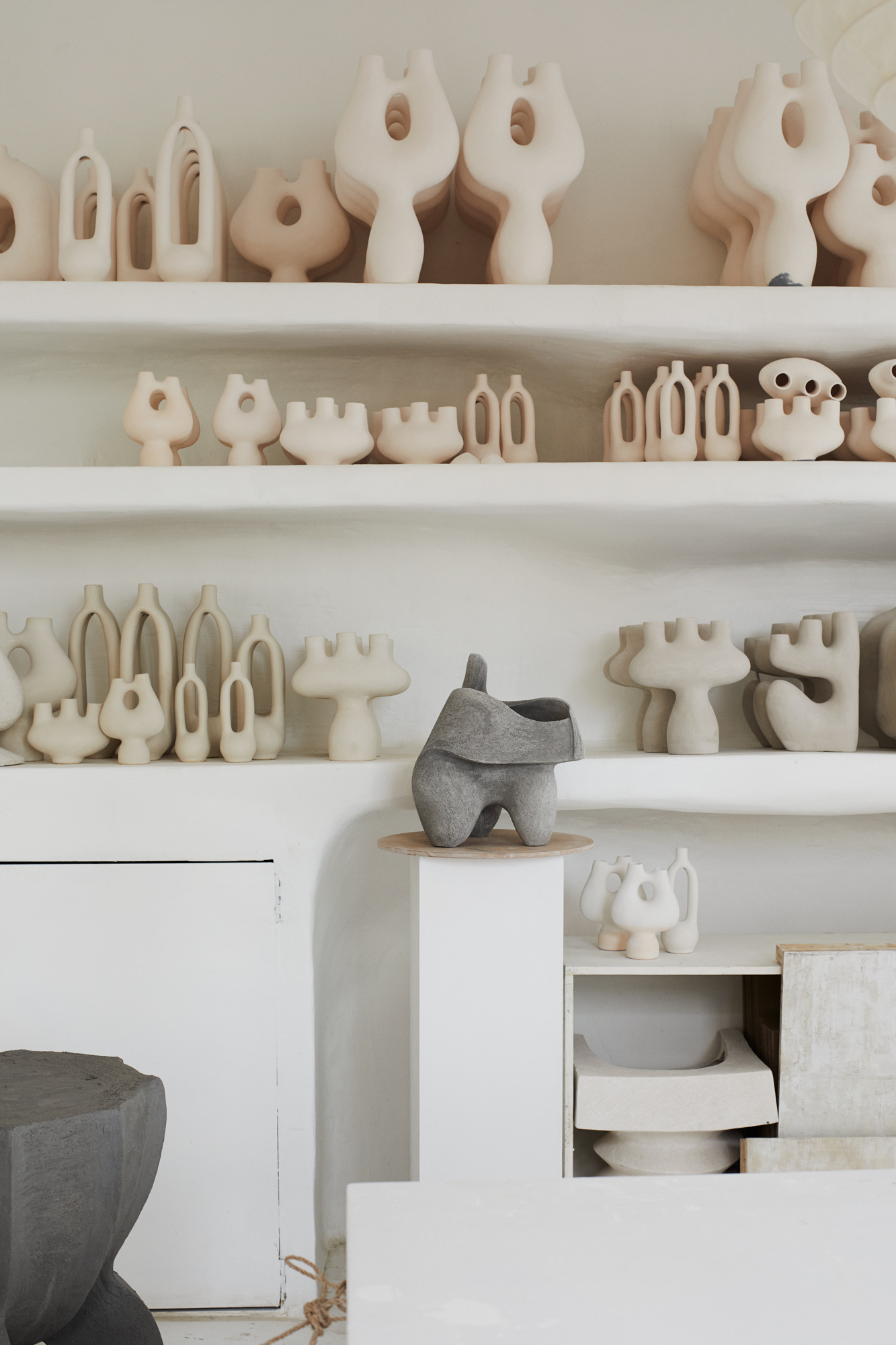
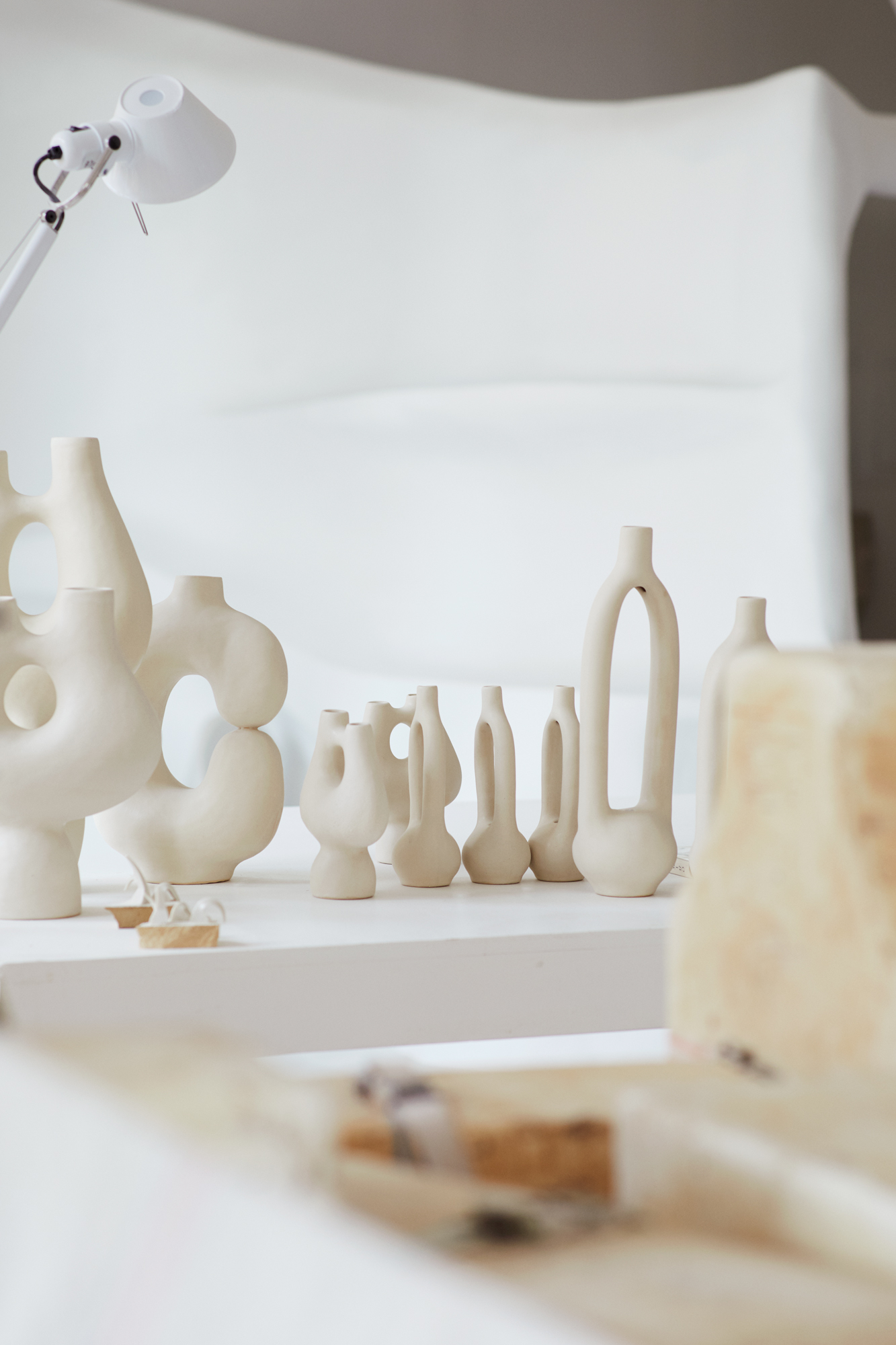
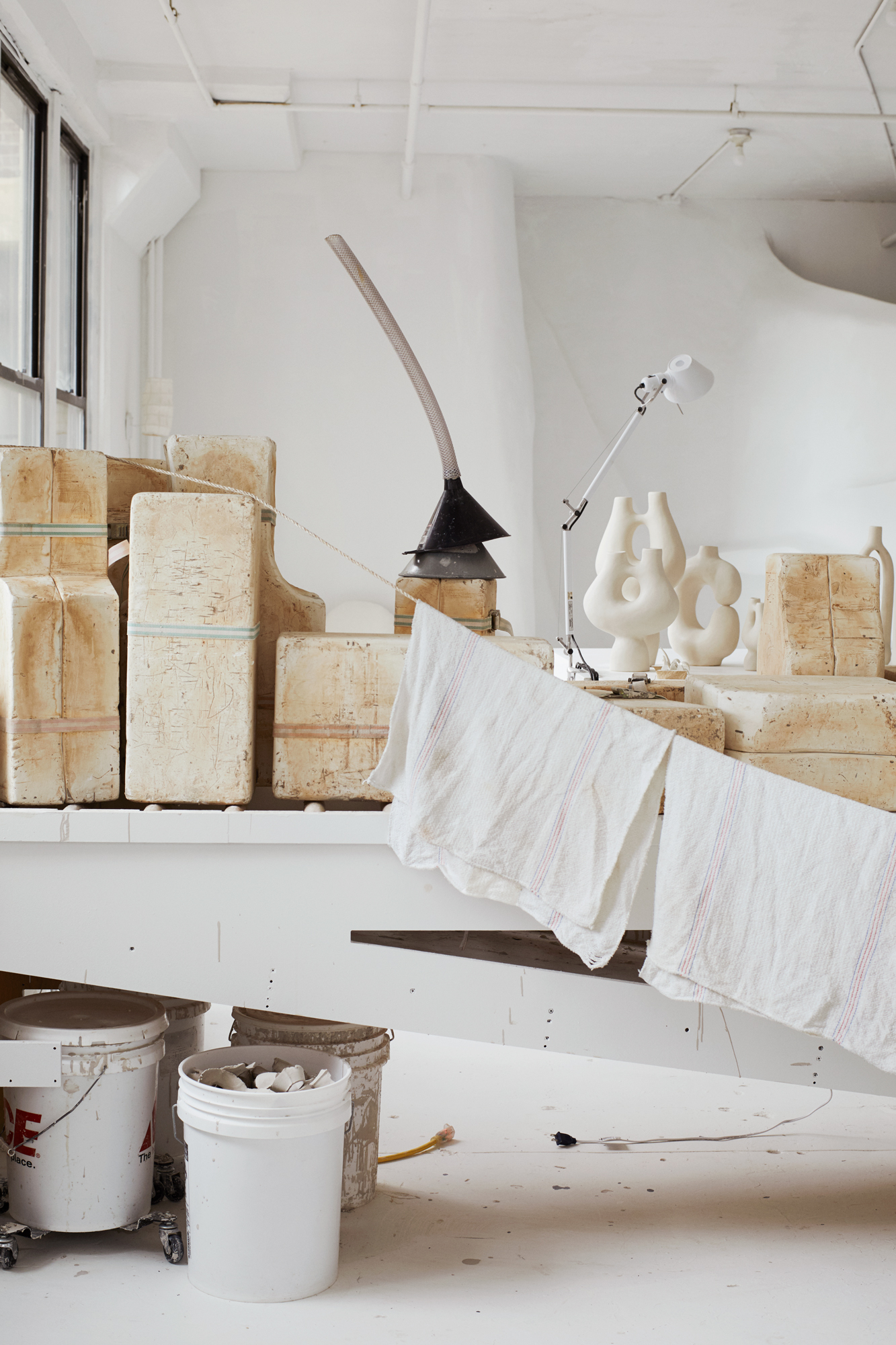
You have two different parts of your practice, one is the sculptural part and another more functional part. Why did you want to separate the two?
The answer is, essentially, process. For the entire time I’ve been making ceramics, they were vessel-based, because I was very interested in the functionality of them. Once I started getting some accounts and getting wholesale orders it became pretty clear that I couldn’t make every piece by hand. Making the same thing over and over again is something some people are equipped for, but not me. I’m always dreaming up the next thing and my mind’s floating to new forms. I wanted to challenge myself, to try more complex things, so we started slip casting the forms because people still really wanted to purchase them and I didn’t want to just stop making them. We continued production so that we could have a design line that would be more accessibly priced, which meant I could focus more on my personal work. It’s allowed me to evolve my personal practice while keeping a line that was more reliable.
You just mentioned your personal practice and exploring new materials and new forms. Tell me about what you’ve been working on recently.
I try not to put too many parameters on my sculptural work; it’s really the one part of my practice I try to keep loose and free. I don’t plan for specific dimensions or recreate previous pieces. I try to always have space and a creative mindset that I can come back to and just experiment and have freedom, especially since part of my creative practice is now also a business. So I try to protect that for myself. Otherwise, I’ve been working on ceramic furniture for the last year and a half, which is now at the end of a long process that I’ve been keeping quiet. I’m starting with a ceramic side table and chair. After a lot of experimentation, I’ve found two forms that I’m really happy with. They’ll be available at the end of this year.
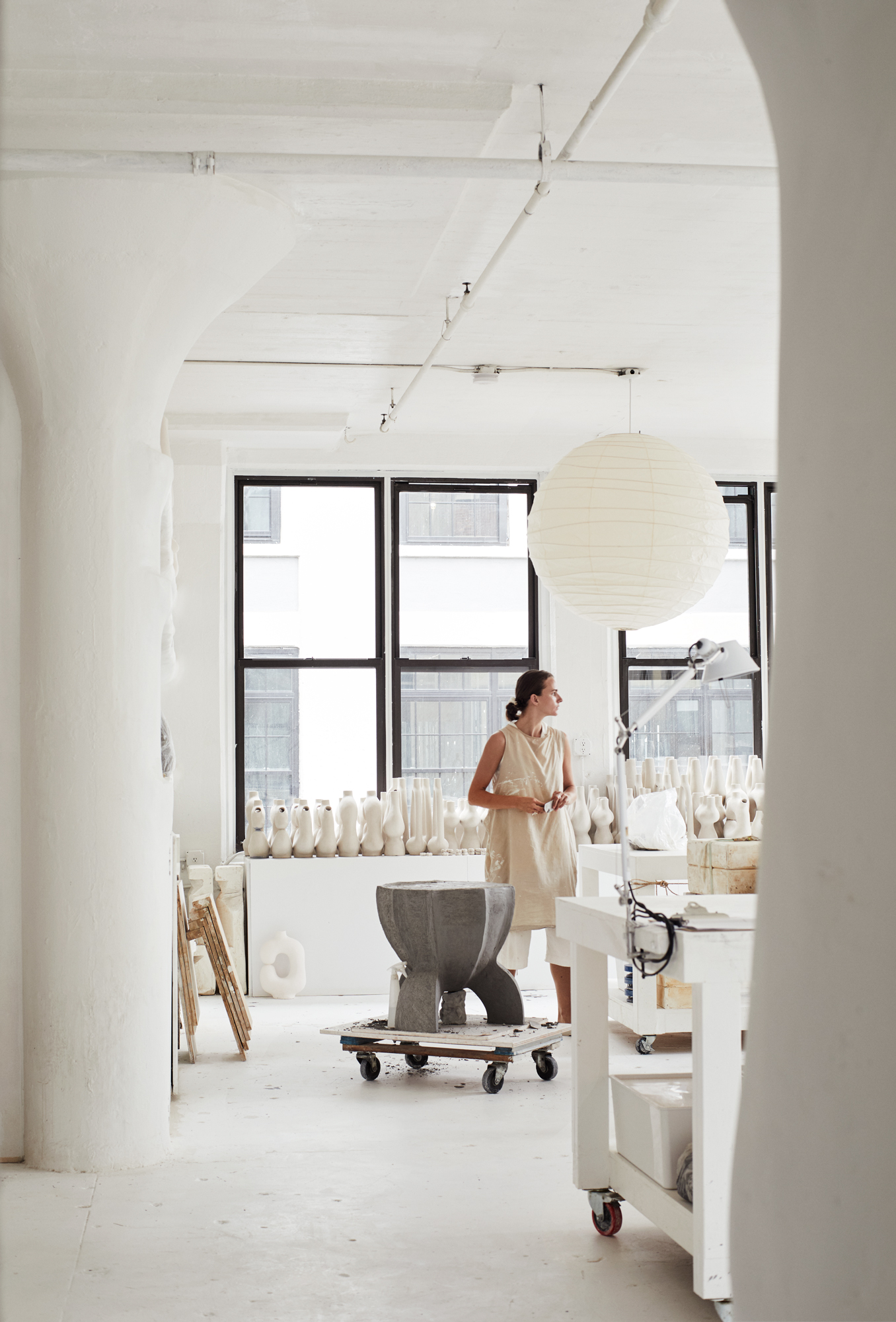
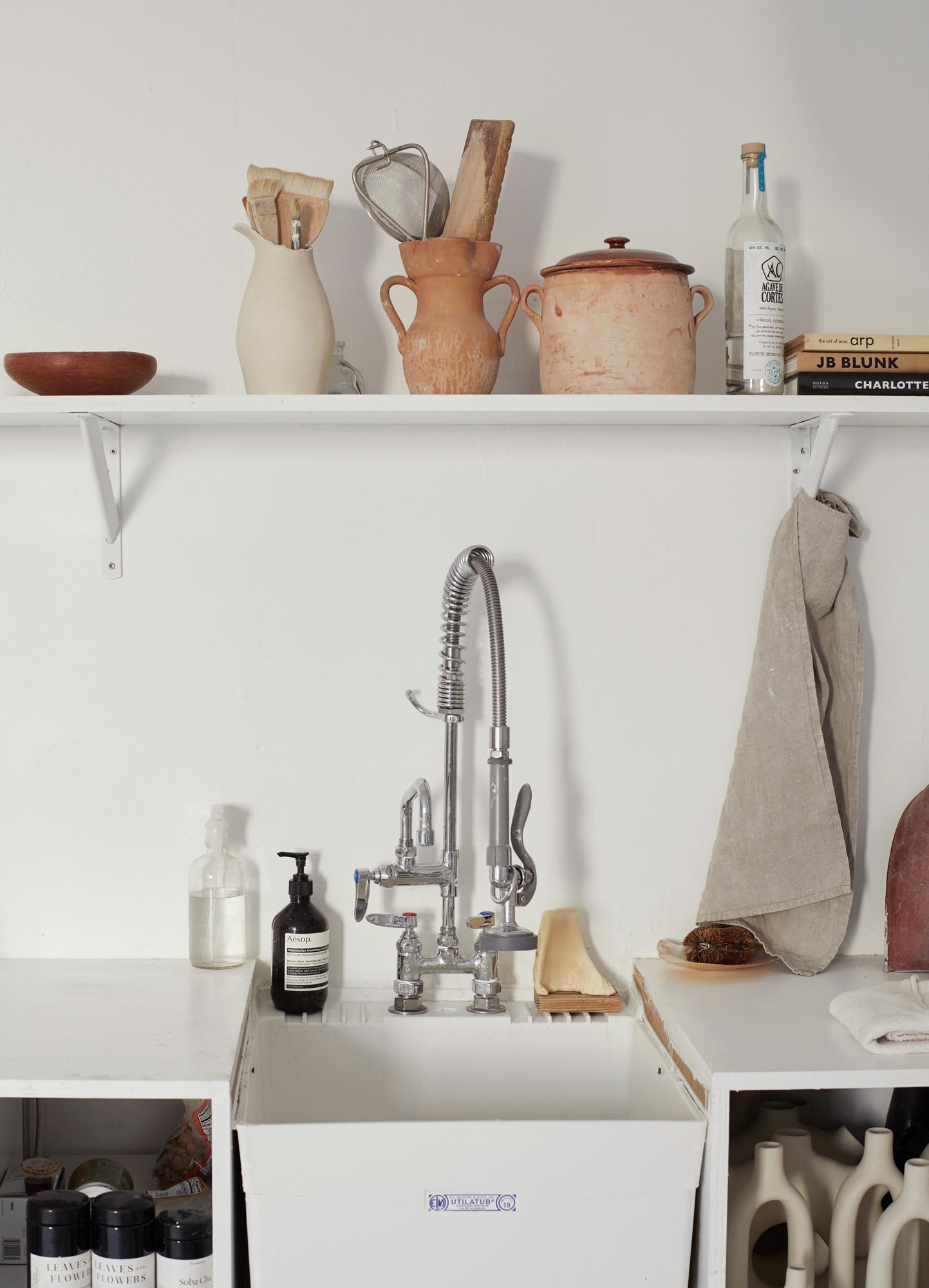
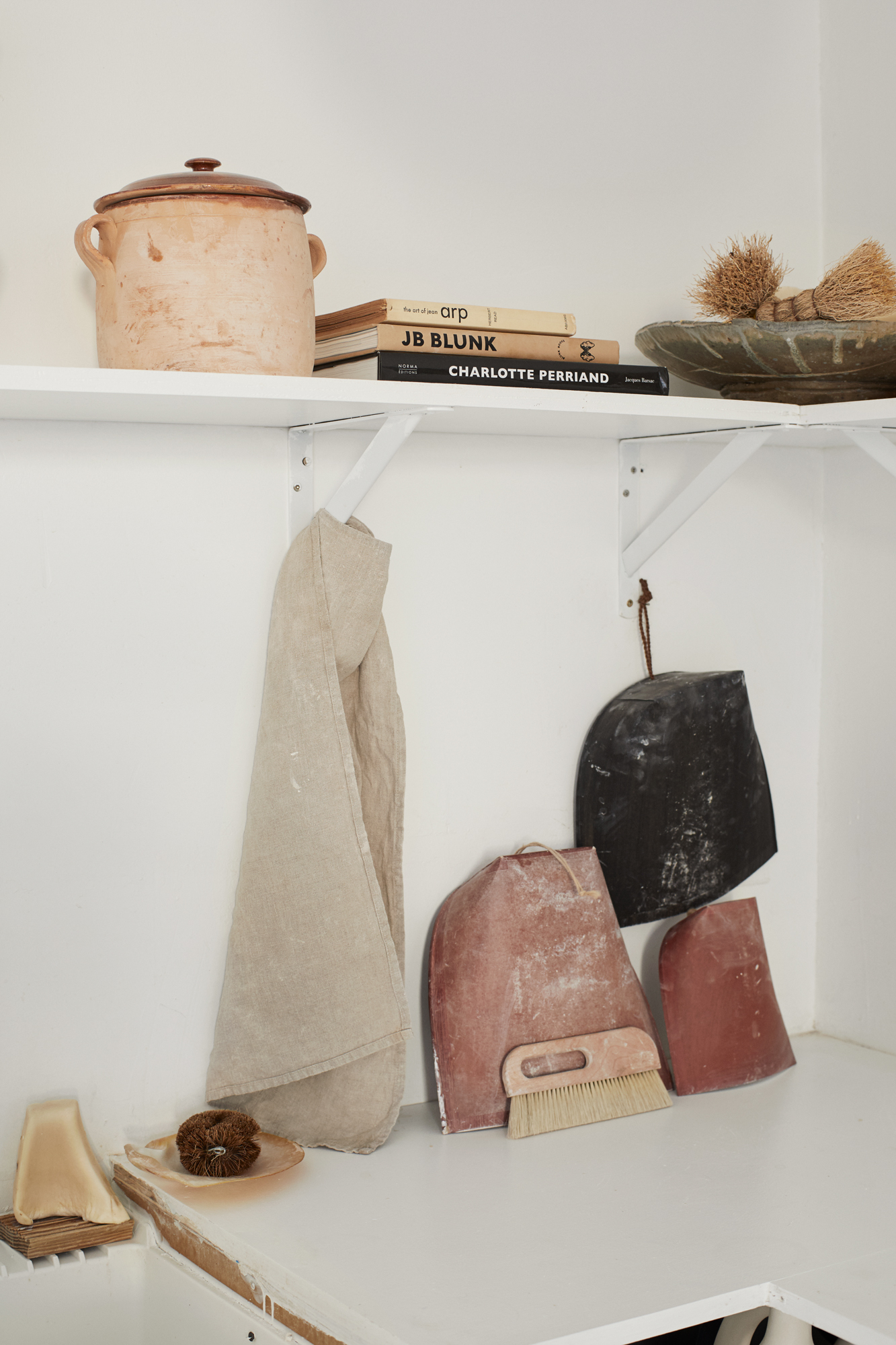
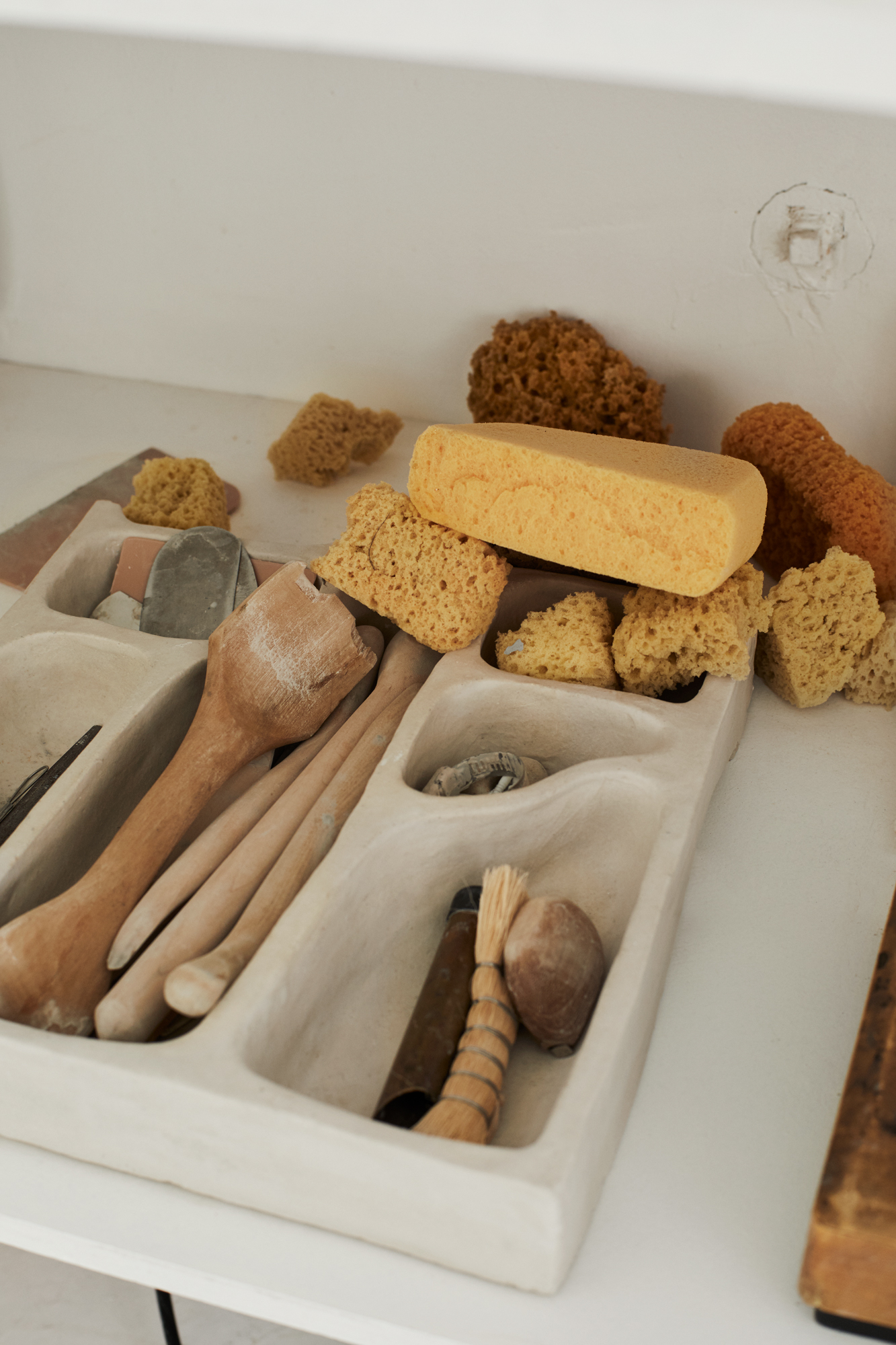
Where do you see your practice headed in the future?
I’m slowly, slowly starting to begin prototyping my first multi-disciplinary furniture collection. Originally, I was hoping to debut some pieces in the spring, but I think it will be a longer timeline. It’s four or five pieces in wood: a dining chair, a drop leaf dining table that collapses, a bed, and a sideboard slash bar. The collection is really influenced by always living in small spaces where I’m trying to get a piece of furniture to work in multiple different ways. I love the surprise element of compactness where you know there’s a drawer or there’s like a lever where a seat comes out. It’s also the reason why nothing can be created quickly. There are all these levers and pulls — elements that need to be very carefully worked into the designs.
Where did the idea for the collection come from?
I love it when you encounter a piece of furniture and it surprises you. The surprise is also hyper-functional where you sit in something and are like: “Oh, this is so comfortable.” And you’re holding a coffee or you’re holding a glass of wine, and you think: “I wish I had a place to put this.” Then you realize that there’s a little drawer that like, pops out and you can put your glass there. That’s the stuff that I love in design and I want to sneak into every little piece in a non-obvious way. Just so only the user will really notice it, but it will heighten the experience of using an object and interacting with it.
